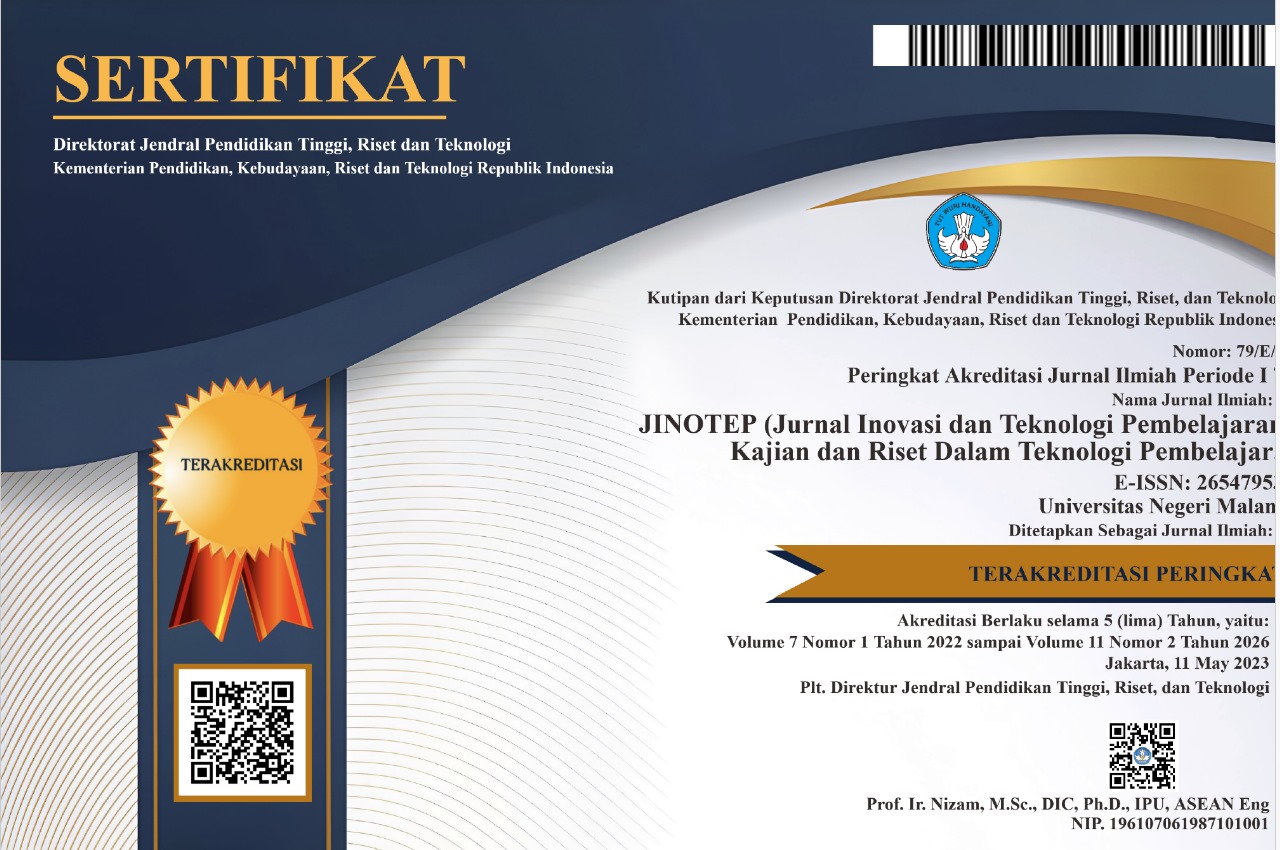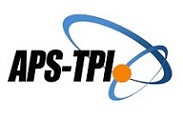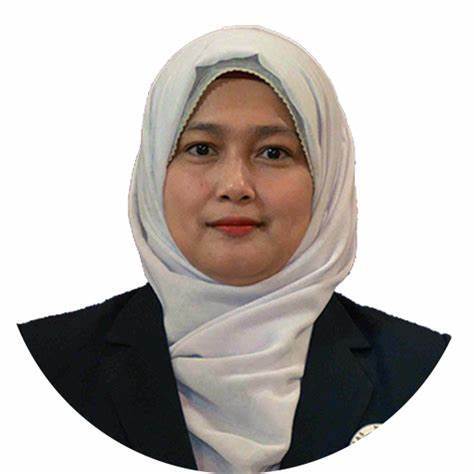Meningkatkan Kemampuan Kognitif Kimia Siswa SMA Melalui Pengembangan Media Pembelajaran Berbasis Android
Abstract
Abstrak: Tujuan penelitian ini adalah untuk mengetahui kualitas media pembelajaran berbasis Android materi tata nama senyawa kimia mengetahui perbedaan peningkatan kemampuan kognitif siswa SMA yang menggunakan mediapembelajaran pembelajaran berbasis Android materi tata nama senyawa Kimia dengan pembelajaran menggunakan LKS. Metode yang diguankan dalam penelitian ini adalah R&D yang didaptasi model pengembangan Borg & Gall dan 4D. Hasil dari pengembangan media pembelajaran berbasis android pada materi tata nama senyawa menunjukkan bahwa media yang dikembangkan layak untuk diaplikasikan dan memiliki kualitas sangat baik, baik dari aspek materi ataupun media. Kemudian, media pembelajaran yang dikembangkan juga mampu meningkatkan Kemampuan Kognitif Siswa setelah diaplikasikan ke dalam pembelajaran. Hal ini terbukti dari hasil uji hipotesis yang menunjukkan adanya perbedaan peningkatan Kemampuan Kognitif Siswa yang menggunakan media yang dikembangkan dengan yang menggunakan LKS.
Abstract: The purpose of this study was to determine the quality of Android-based learning media for chemical compound nomenclature material to know the differences in the cognitive ability enhancement of high school students who use Android-based learning media for chemical compound nomenclature materials by learning using LKS. The method used in this research is R&D adapted to the Borg & Gall and 4D development models. The results of the development of Android-based learning media on compound nomenclature material show that the media developed is feasible to be applied and has very good quality, both in terms of material and media aspects. Then, the learning media developed can also improve students' cognitive abilities after they are applied to learning. This is evident from the results of hypothesis testing which shows that there is a difference in the increase in students' cognitive abilities using developed media and those using LKS.
Keywords
Full Text:
PDFReferences
Bayir, E. (2014). Developing and playing chemistry games to learn about elements, compounds, and the periodic table: Elemental Periodica, Compoundica, and Groupica. Journal of Chemical Education, 91(4), 531-535.
Cha, J., Kan, S. Y., & Chia, P. W. (2018). “Spot the differences” Game: An Interactive Method That Engage Students in Organic Chemistry Learning. Journal of the Korean Chemical Society, 62(2).
Corebima, A. D., Susilo, H., & Zubaidah, S. (2017). Creative Thinking of Low Academic Student Undergoing Search Solve Create and Share Learning Integrated with Metacognitive Strategy. International Journal of Instruction, 10(2).
Faizah, L. S. I., Afandy, D., & Su’aidy, M. (2013). Studi Pemahaman Konsep Tata Nama IUPAC Senyawa Anorganik Siswa Kelas X SMA Negeri 9 Malang Semester 2 Tahun Ajaran 2012/2013. Universitas Negeri Malang, Malang.
Ghavifekr, S., & Rosdy, W. A. W. (2015). Teaching and learning with technology: Effectiveness of ICT integration in schools. International Journal of Research in Education and Science, 1(2), 175-191.
Gupta, T., & Belford, R. E. (2019). Conclusion: Technology Integration in Chemistry Education and Research: What Did We Learn and What Can We Expect Going Forward?. In Technology Integration in Chemistry Education and Research (TICER) (pp. 281-301). American Chemical Society.
Hassinger-Das, B., Bustamante, A. S., Hirsh-Pasek, K., & Golinkoff, R. M. (2018). Learning landscapes: Playing the way to learning and engagement in public spaces. Education Sciences, 8(2), 74.
Hobbs, R. (2011). Digital and media literacy: Connecting culture and classroom. Corwin Press.
Jabbour, K. K. (2014). An analysis of the effect of mobile learning on Lebanese higher education. Informatics in Education-An International Journal, 13(1), 1-16.
Júnior, J. N., Nobre, D. J., do Nascimento, R. S., Torres Jr, G. S., Leite Jr, A. J. M., Monteiro, A. J., ... & Rojo, M. J. (2018). Interactive computer game that engages students in reviewing organic compound nomenclature. Journal of Chemical Education, 95(5), 899-902.
Kominfo. 2017. Survey Penggunaan TIK 2017. Jakarta: Pusat Penelitian dan Pengembangan Aplikasi Informatika dan Informasi dan Komunikasi Publik Badan Penelitian dan Pengembangan Sumber Daya Manusia Kementerian Komunikasi dan Informatika Republik Indonesia
Li, M. C., & Tsai, C. C. (2013). Game-based learning in science education: A review of relevant research. Journal of Science Education and Technology, 22(6), 877-898.
Lima, M. A., Monteiro, Á. C., Melo Leite Junior, A. J., de Andrade Matos, I. S., Alexandre, F. S. O., Nobre, D. J., ... & da Silva Júnior, J. N. (2019). Game-based application for helping students review chemical nomenclature in a fun way.
Lubis, I. R., & Ikhsan, J. (2015). Pengembangan media pembelajaran kimia berbasis android untuk meningkatkan motivasi belajar dan prestasi kognitif peserta didik SMA. Jurnal Inovasi Pendidikan IPA, 1(2), 191-201.
Mariscal, A. J., Oliva-Martínez, J. M., & Almoraima Gil, M. L. (2015). Students’ perceptions about the use of educational games as a tool for teaching the periodic table of elements at the high school level. Journal of Chemical Education, 92(2), 278-285.
Mariscal, A. J., Oliva Martínez, J. M., & Bernal Márquez, S. (2012). An educational card game for learning families of chemical elements. Journal of Chemical Education, 89(8), 1044-1046.
Mentari, L., Suardana, I. N., & Subagia, I. W. (2017). Analisis Miskonsepsi Siswa SMA pada pembelajaran Kimia untuk materi larutan penyangga. Jurnal Pendidikan Kimia Undiksha, 1(1).
Musahrain, M. Developing Android-Based Mobile Learning as a Media in Teaching English. In Proceeding of the International Conference on Teacher Training and Education (Vol. 2, No. 1, pp. 307-313).
Prabowowati, K., & Hadisaputro, S. (2014). Penerapan media chemscool dengan metode guided note taking pada pemahaman konsep siswa. Jurnal inovasi pendidikan kimia, 8(2).
Pivec, P., & Pivec, M. (2013). Digital Games: Changing Education, One Raid at a Time. In Developments in Current Game-Based Learning Design and Deployment (pp. 253-272). IGI Global.
Sakat, A. A., Zin, M. Z. M., Muhamad, R., Anzaruddin, A., Ahmad, N. A., & Kasmo, M. A. (2012). Educational Technology Media Method In Teaching And Learning Progress. Advances in Natural and Applied Sciences, 6(3), 484-490.
Sriwidadi, T. (2011). Penggunaan uji mann-whitney pada analisis pengaruh pelatihan wiraniaga dalam penjualan produk baru. Binus Business Review, 2(2), 751-762.
Tsai, J. C., Cheng, P. H., Liu, S. Y., & Chang, C. Y. (2019). Using board games to teach socioscientific issues on biological conservation and economic development in Taiwan. Journal of Baltic Science Education, 18(4), 634.
Tsai, J. C., Chen, S. Y., Chang, C. Y., & Liu, S. Y. (2020). Element enterprise tycoon: Playing board games to learn chemistry in daily life. Education Sciences, 10(3), 48.
TURAÇOĞLU, İ., ALPAT, Ş., & Ellez, A. M. (2013). Effects of Jigsaw on Teaching Chemical Nomenclature. Education & Science/Egitim ve Bilim, 38(167).
Ulfa, A. M., Sugiyarto, K. H., & Ikhsan, J. (2017, May). The effect of the use of android-based application in learning together to improve students’ academic performance. In AIP Conference Proceedings (Vol. 1847, No. 1, p. 050008). AIP Publishing LLC.
Woo, J. C. (2014). Digital game-based learning supports student motivation, cognitive success, and performance outcomes. Journal of Educational Technology & Society, 17(3), 291-307.
DOI: http://dx.doi.org/10.17977/um031v7i22020p157
Refbacks
- There are currently no refbacks.
Copyright (c) 2020 Isna Rezia Lukman, Andi Maria Ulfa

This work is licensed under a Creative Commons Attribution-ShareAlike 4.0 International License.
======================================================================
Jurnal Inovasi dan Teknologi Pembelajaran published by Universitas Negeri Malang in collaboration with the Asosiasi Program Studi Teknologi Pendidikan Indonesia (APS TPI) and Ikatan Profesi Teknologi Pendidikan Indonesia (IPTPI) with a MoU.
Publisher Address:
Educational Technology Laboratorium, Building D5, 1st Floor
Faculty of Education, Universitas Negeri Malang
Semarang St. No. 5, Malang City, East Java Province, Postal Code 65145
Email: jinotep.fip@um.ac.id
======================================================================

JINOTEP is licensed under a Creative Commons Attribution-ShareAlike 4.0 International License.
JINOTEP Statistics (Since July 13th, 2020)


.png)




.png)
1.png)
1.png)
4.png)
2.png)
1.png)
1.png)
.png)


_3.png)





1.png)
.png)